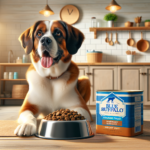Focus Keyword: Potty Train a Dog
Introduction
Have you ever wondered why some dogs seem to learn how to go potty outside faster than others? Is it just luck, or is there something more to it? The truth is, potty training doesn’t have to be as hard as many people think. With the right approach and tools, you can Potty Train a Dog in no time 1. In this guide, we’ll explore six proven methods that will help your furry friend understand where they should do their business.
Overview
When it comes to potty training, consistency and patience are key. These six methods are designed to make the process easier for both you and your dog. Most of these techniques require daily practice but promise results within weeks if followed correctly. They vary slightly in difficulty, from beginner-friendly routines to slightly advanced strategies, ensuring there’s something for every pet parent.
Step-by-Step Instructions
Establishing a Routine
Creating a schedule is one of the most effective ways to Potty Train a Dog. Dogs thrive on structure, so taking your puppy out at regular intervals helps them anticipate when it’s time to relieve themselves. According to experts, puppies need to go outside frequently—every hour or after meals 7. This routine not only teaches them good habits but also reduces accidents indoors.
Choosing a Bathroom Spot
Selecting a specific area outdoors where your dog can eliminate is crucial. Consistently bringing your dog to the same spot reinforces the idea that this is their designated bathroom area. As mentioned in another source, rewarding your puppy immediately after they finish can encourage them to associate this location with positive experiences 4.
Supervision Inside
Keeping an eye on your dog while inside prevents accidents before they happen. If you notice signs like sniffing around or circling, take them outside right away. Some trainers suggest using baby gates or crates to limit access to certain areas until your dog has mastered housebreaking 3.
Assembly
Practicing the Methods
Once you’ve prepared by setting up a routine, choosing a spot, and supervising closely, it’s time to put everything into action. Here’s how you can apply each method effectively:
- Frequent Outings: Take your dog outside every hour, especially after eating or drinking.
- Positive Reinforcement: Reward your dog with treats or praise whenever they use the correct spot.
- Leash Use: Keep your dog on a leash during outdoor trips to maintain focus on the task at hand.
- Accident Management: Clean any indoor accidents thoroughly with enzymatic cleaners to remove lingering odors that might attract future incidents.
- Cue Words: Introduce verbal cues such as “go potty” to signal what you expect from your dog.
- Indoor Solutions: For those times when going outside isn’t feasible, consider alternatives like piddle pads or indoor potty boxes 8.
Presentation Tips
While presentation doesn’t directly apply here, creating a pleasant environment for your dog can enhance learning. Ensure the chosen outdoor space is comfortable and free of distractions. Also, keep rewards visible yet controlled to avoid overfeeding.
Storage and Make-Ahead Tips
Although potty training itself doesn’t involve physical storage, maintaining supplies like treats, cleaning products, and leashes nearby makes the process smoother. Store treats in airtight containers to preserve freshness and rotate through different types occasionally to prevent boredom.
Methods Variations
Every dog is unique, which means one size doesn’t fit all when it comes to potty training. Here are a few variations you might try based on your dog’s personality:
- Clicker Training: Pair clicks with rewards to mark desired behaviors instantly.
- Bell System: Teach your dog to ring a bell near the door when they need to go out.
- Scheduled Feeding: Control feeding times to better predict elimination schedules.
Conclusion
Potty training may seem daunting initially, but breaking it down into manageable steps transforms it into an achievable goal. By employing these six proven methods, you’ll soon enjoy a well-trained companion who understands proper bathroom etiquette. Remember, patience and persistence pay off—so don’t give up too soon!
FAQs
Q: How long does it typically take to Potty Train a Dog?
A: On average, it takes about four to six months for young puppies to fully grasp the concept. However, older dogs may learn quicker depending on previous exposure to similar routines 5.
Q: What are common mistakes during potty training?
A: One major mistake is relying heavily on pee pads, which can confuse dogs about appropriate locations 9. Another pitfall involves inconsistent schedules; sticking to a plan yields better outcomes.
Q: Can I use punishment if my dog has an accident inside?
A: No, punishing your dog after an accident won’t help them learn faster. Instead, focus on reinforcing good behavior through rewards and supervision 6.
By following these guidelines and addressing potential challenges head-on, you’re well on your way to successfully Potty Train a Dog!

